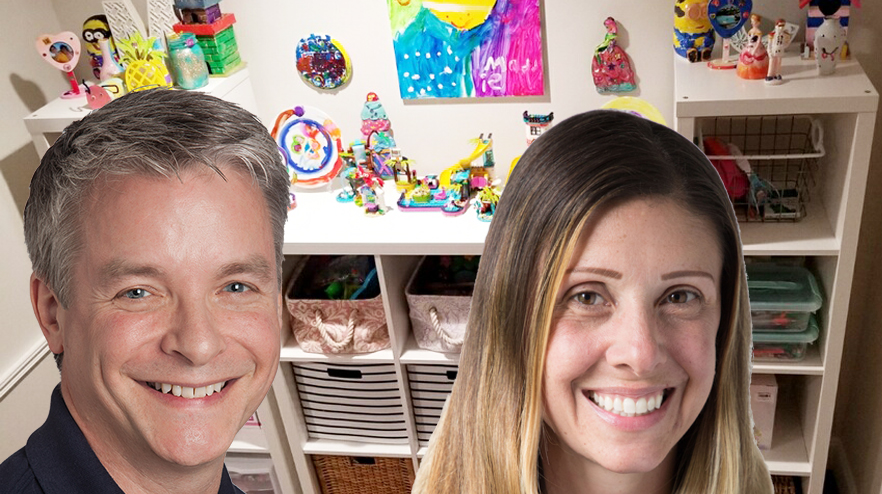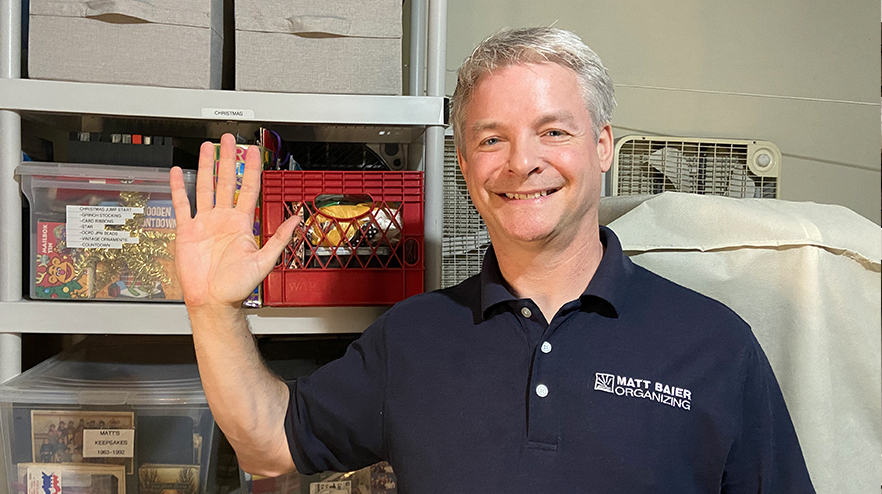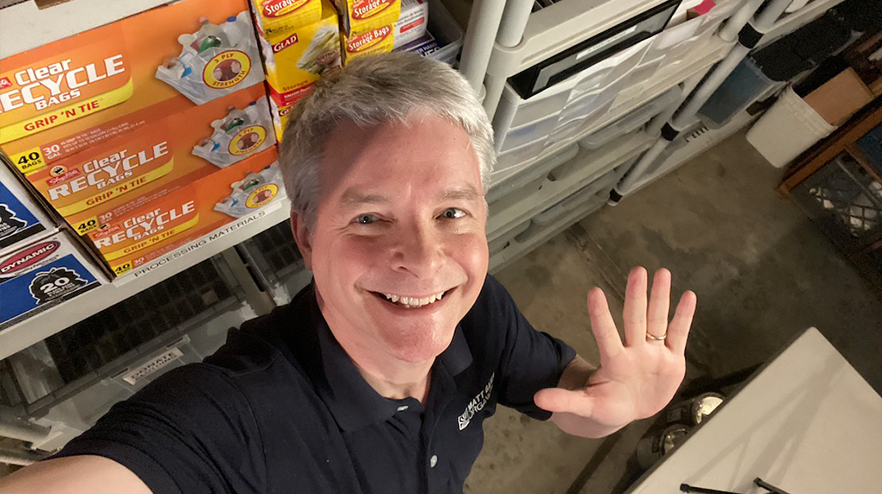A child’s creativity is an exciting thing to watch, so it seems a crime to get rid of any of his or her creations. The trouble is, these creations can accumulate, and in very awkward ways.
So what do you do? Here are five tips.
1. Circulation prevents accumulation.
My answer to all organizing challenges is a simple process that moves forward in stages. Processing children’s art is no exception. You know that you can’t keep it all forever, but you also know that you’re not suddenly going to become heartless and throw it all out, so you need a happy medium. It starts with an easy system for display. Here’s a great display product that one of my favorite clients shared with me.
Display the best art as it comes in and when you run out of display space, collect the older art in a dedicated portfolio or drawer. Allow yourself to be indecisive for the moment, but schedule an hour, at least once a year, to edit the collected artwork. Decisions become easier when they are seasoned with time.
2. Dedicate a larger container.
Whether children’s art is given a proper portfolio or shoved into a file cabinet, art containers tend to be too small. Children’s art comes in variety of sizes, including big and clumsy. If you have to fold the art to fit into a little container, you really have to ask what’s the point of keeping it at all. So go with a large portfolio, one that will fit the biggest pieces of art. Also, dedicate a large clear plastic box for 3D art. Provide a generous allowance for growth, but when it hits the limit, then some of the older, less brilliant, more broken stuff has to go.
3. Kodak moment.
If space is really tight, take photos. Put them in an album and store the originals more remotely. See if anyone misses the originals for a year. If not, toss them. This is an especially good idea for 3D art. It’s much easier to enjoy and share a collection of art by flipping through a book anyway.
4. Keep it well.
If you are convinced that your child really is the next Picasso, then invest in flat files. A set of flat file drawers is the best structure to store art flat. Sure, it’s expensive (about $600 for a 24″x36″ set), but if these early masterworks are truly worth saving, then they are worth saving WELL.
5. Ask WHY you keep it.
OK, I trust that most of you reading this will find my last tip about the flat files RIDICULOUS, but it goes to a larger point. As with all organizing solutions, the first step is to ask, why are you keeping it? This is not a challenge to toss something (necessarily) but a useful guide to direct you to the appropriate solution. To start with, are you saving this for your child or for YOU? In most cases a child is ready to let go before a parent. Also, it’s important to remember that if everything’s important then nothing’s important. If you want to know WHERE something should go, start by asking, WHY are you keeping it?
Even as a kid I recall having mixed feelings about seeing my artwork scotch taped to the ‘fridge: my awesome art was being showcased but it looked like crap, especially after a corner would come loose and start flapping around after repeated openings and closings of the door. Parents have similar mixed feelings about their children’s artwork. As with so many items the problems come when there is simply too much.
These five tips should help keep the quantity manageable.
TODAY’S KEY TO UNLOCKING CLUTTER: Strategic limitation is the best way to honor a boundless imagination.
Please Share With Your Community
Related Posts
Testimonials
What some of our clients are saying
Imagine An Organized Home
















